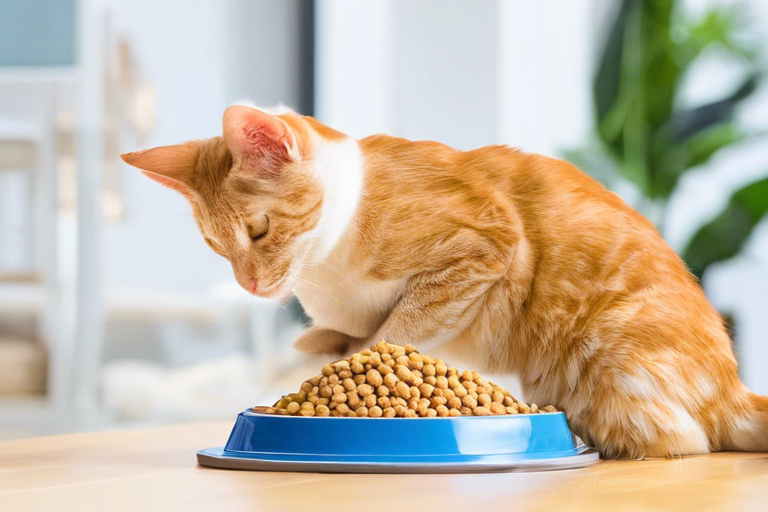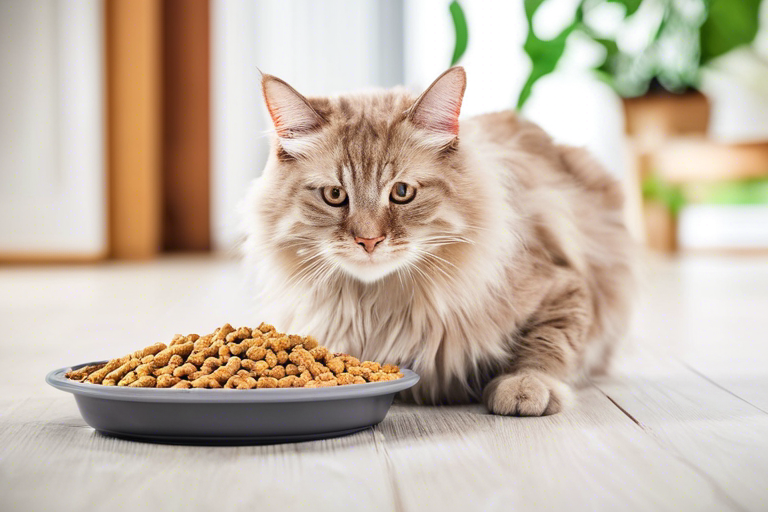## Introduction
Indoor cats have unique nutritional needs. Unlike their outdoor counterparts, they have limited opportunities for exercise and tend to be more prone to obesity and other health issues. As a responsible cat owner, it is crucial to provide your indoor cat with a balanced and nutritious diet. In this comprehensive guide, we will explore the key factors to consider when choosing the best cat food for indoor cats.
The Importance of a Balanced Diet
A balanced diet is essential for the overall health and wellbeing of your indoor cat. It provides the necessary nutrients, vitamins, and minerals to support their growth, development, and immune system. A well-balanced diet can also help prevent common health issues such as obesity, urinary tract problems, and dental diseases.
Understanding the Nutritional Needs of Indoor Cats
Indoor cats have specific nutritional requirements due to their sedentary lifestyle. Here are some key considerations when selecting cat food for indoor cats:
1. Protein Content
Protein is a vital component of a cat’s diet. It is crucial for maintaining lean muscle mass and providing energy. Look for cat foods that have high-quality animal protein sources such as chicken, turkey, or fish. Aim for a minimum protein content of 30% in the cat food you choose.
2. Fat Content
While fat is an essential part of a cat’s diet, it should be provided in moderation. Excess fat can lead to weight gain and obesity. Opt for cat foods with a moderate fat content, preferably around 10-15%.
3. Fiber Content
Fiber plays a crucial role in maintaining healthy digestion and preventing hairballs. Indoor cats are more prone to hairballs due to their grooming habits. Choose cat foods that contain a moderate amount of fiber, typically around 3-5%.
4. Essential Nutrients
Indoor cats may require additional nutrients to support their overall health. Look for cat foods that are fortified with essential vitamins and minerals such as omega-3 fatty acids, taurine, and antioxidants. These nutrients can help promote a healthy coat, strong immune system, and optimal organ function.

Types of Cat Food for Indoor Cats
There are various types of cat food available in the market. Let’s explore the most common options and their benefits for indoor cats:
1. Dry Cat Food
Dry cat food, also known as kibble, is a popular choice for many cat owners. It is convenient, cost-effective, and has a longer shelf life. Dry cat food can also help maintain dental health by reducing plaque and tartar buildup. However, it is essential to ensure that your cat stays hydrated when feeding them dry food.
2. Wet Cat Food
Wet cat food, also known as canned cat food, has a higher moisture content compared to dry cat food. It provides hydration and can be beneficial for cats that don’t drink enough water. Wet cat food is also generally more palatable for cats, making it a great option for picky eaters. However, it can be more expensive and has a shorter shelf life once opened.
3. Grain-Free Cat Food
Grain-free cat food has gained popularity in recent years. It eliminates grains such as wheat, corn, and soy, which some cats may be sensitive or allergic to. Grain-free cat food usually contains alternative carbohydrate sources like potatoes or peas. However, it is essential to consult with your veterinarian before switching to a grain-free diet, as it may not be necessary for all cats.
4. Limited Ingredient Cat Food
Limited ingredient cat food is formulated with a minimal number of ingredients. It is an excellent option for cats with food sensitivities or allergies. By eliminating potential allergens, limited ingredient cat food can help reduce digestive issues and promote better overall health.
Tips for Choosing the Best Cat Food for Indoor Cats
Choosing the best cat food for your indoor cat can be overwhelming with so many options available. Here are some tips to help you make an informed decision:
- Consult with Your Veterinarian: Your veterinarian is the best source of advice when it comes to your cat’s nutritional needs. They can recommend specific cat food brands and formulations based on your cat’s age, weight, and any existing health conditions.
- Read the Ingredients List: Always read the ingredients list on the cat food packaging. Look for high-quality protein sources as the primary ingredients. Avoid cat foods that contain fillers, artificial preservatives, and by-products.
- Consider Your Cat’s Age and Health: Cats have different nutritional requirements at different life stages. Kittens, adult cats, and senior cats have varying needs. Additionally, if your cat has any specific health concerns, such as urinary tract issues or allergies, choose a cat food that addresses those needs.
- Monitor Your Cat’s Weight: Obesity is a common problem among indoor cats. Choose a cat food that promotes a healthy weight and helps prevent weight gain. Look for formulas labeled as “weight management” or “indoor cat” that have controlled calorie content.
- Gradually Transition to New Food: When introducing a new cat food, it is essential to transition gradually. Mix a small amount of the new food with the old food and gradually increase the proportion over a week or two. This will help prevent digestive upset.
- Monitor Your Cat’s Response: After switching to a new cat food, observe your cat’s response. Look for signs of improved energy, healthy coat, and regular bowel movements. If you notice any adverse reactions or changes in behavior, consult with your veterinarian.
Conclusion
Choosing the best cat food for indoor cats is a crucial responsibility for cat owners. By understanding the nutritional needs of indoor cats and considering factors like protein content, fat content, and essential nutrients, you can make an informed decision. Remember to consult with your veterinarian and monitor your cat’s response to ensure they receive a balanced and nutritious diet. With the right cat food, you can help your indoor cat thrive and live a healthy, happy life.



1 thought on “The Ultimate Guide to Choosing the Best Cat Food for Indoor Cats”